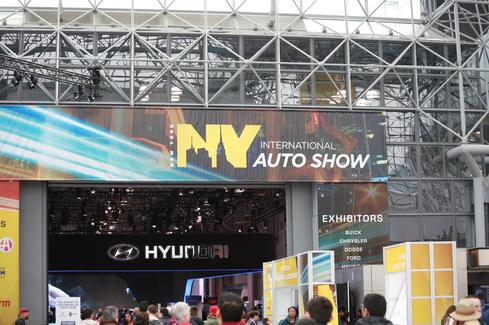Used Chevy Volt Batteries Power Data CenterUsed Chevy Volt Batteries Power Data Center
Now that they can power everything from cars to data centers, Chevy Volt batteries show they do more than your average Energizer.


New York Auto Show: Cool Cars With Hot Tech
New York Auto Show: Cool Cars With Hot Tech (Click image for larger view and slideshow.)
General Motors may not be the first company you think of when you hear the world recycling, but the auto giant has done just that by taking used batteries from its Chevy Volt electric vehicles and deploying them to power an enterprise data center at its Milford Proving Ground in Michigan.
The company is tapping into the energy left in batteries from first-generation Volt models by employing five of them at the data center, which feed the administration building's circuit breaker panel, working in parallel with a new solar array and two wind turbines.
Together, the renewable energy sources generate approximately 100 megawatts per hour (Mwh) of energy annually, roughly equivalent to the energy used by 12 average households.
The solar array and twin wind turbines generate enough power to meet all the needs of the office building and also power the lighting in the adjacent parking lot.
The five batteries can also provide backup power to the building for up to four hours in case of a power outage. They can store that energy when it is not needed.
GM is not the only car company that's looking for different ways to use its battery technology for projects other than automobiles. Recently Tesla Motors, producer of ultra-cool electric cars, announced that it would enter the home market. A few months later, Daimler AG -- maker of Mercedes-- detailed a similar program.
In the case of GM, the combination of green energy sources delivers net-zero energy consumption on an annual basis. The reuse of Volt batteries also helped the data center administration building attain LEED Gold certification from the US Green Building Council.
"Even after the battery has reached the end of its useful life in a Chevrolet Volt, up to 80% of its storage capacity remains," Pablo Valencia, senior manager of battery life cycle management at GM, said in a statement. "This secondary use application extends its life while delivering waste reduction and economic benefits on an industrial scale."
Valencia also noted the system is ideal for commercial purposes because a business can derive full functionality from an existing battery while reducing upfront costs through reuse.
The company is also working on secondary applications for the used batteries, working with partners to test other potential commercial and non-commercial functions.
[Read more about data centers cutting their energy consumption.]
This isn't the first time GM has found practical, environmentally friendly uses for parts of its vehicles. Last year, the company revealed that an adhesive employed in the production of the 2015 Corvette Stingray could help prevent white-nose syndrome, a deadly fungus appearing on the muzzle and other parts of hibernating bats.
When processed, the adhesive can serve as a stalactite in artificial bat caves, which gives hibernating bats more surface area from which to hang, thus spreading them out around the cave.
The company also creates bat houses out of scrap Volt battery covers that can hold up to 150 little brown bats each. So far 232 of these bat houses have been installed on its properties and other places in the US.
About the Author
You May Also Like






